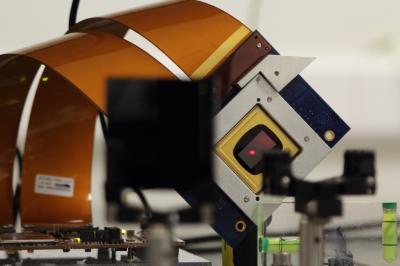University of Liverpool
Development of designs for possible LHC upgrade options
Trainee: Emilia Cruz Alaniz
Supervisor: Andy Wolski
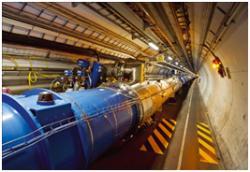 The project will contribute to the development of the LHeC, a possible LHC upgrade option to expand its research program by colliding an electron beam with the existing proton beam. The LHeC will run synchronously with the LHC and will substantially extend and complete the investigation of the physics of the TeV energy scale, providing the study of open questions in high precision QCD, new physics such as Higgs or SUSY and electron-ion physics. The focus of this work will be on integrating an electron beam with the LHC
The project will contribute to the development of the LHeC, a possible LHC upgrade option to expand its research program by colliding an electron beam with the existing proton beam. The LHeC will run synchronously with the LHC and will substantially extend and complete the investigation of the physics of the TeV energy scale, providing the study of open questions in high precision QCD, new physics such as Higgs or SUSY and electron-ion physics. The focus of this work will be on integrating an electron beam with the LHC
lattice at one of the interaction regions (IR) without perturbing the colliding proton beams at the other IRs.
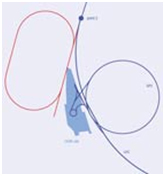
Possible Layout for the LHeC in which an electron linac arrives tangentially to the LHC
An important part of this development involves reducing the beta function of the proton beam in the interaction region to maximise the luminosity. The second proton beam must also be accommodated and must be matched to the current LHC optics scheme. The final focus optics will need to be optimised to achieve thesegoals, without unduly perturbing the second proton beam at other interaction points. To achieve this it will be necessary to develop algorithms based on the study of the basic optics design taking into consideration the aperture requirements and constraints on magnet strengths and positions, the optimization of a chromatic correction scheme and the need to provide a dynamic aperture that is as large as possible. The specification of field quality for the final focus quadrupoles and the design of correction systems for steering and focusing errors will also need to be considered.
Images courtesy of CERN
Video:
Beam monitor for halo propagation mechanisms
Trainee: Blaine Lomberg
Supervisor: Carsten P. Welsch
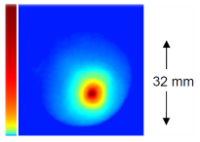 The project involves cutting edge research into accelerator science and technology to optimise the performance of any particle accelerator; this relies on a good understanding of the beam physics. The pioneering developments into a micro mirror-based halo monitor, is an ideal method to measure transverse profiles with a dynamic range of better than 10e5 with high accuracy.
The project involves cutting edge research into accelerator science and technology to optimise the performance of any particle accelerator; this relies on a good understanding of the beam physics. The pioneering developments into a micro mirror-based halo monitor, is an ideal method to measure transverse profiles with a dynamic range of better than 10e5 with high accuracy.
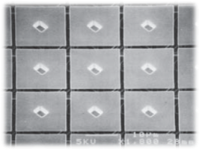 The monitor will be designed to control more than a 1000x1000 micro-scopic mirrors to generate an adaptive optical mask in detecting only particles of interest for study. To control and detect halo formation of a particle beam, developments into a new code that will combine known halo formation processes into one single halo generator and use the resulting beam distribution for particle tracking of different oPAC facilities , such as CTF3, the
The monitor will be designed to control more than a 1000x1000 micro-scopic mirrors to generate an adaptive optical mask in detecting only particles of interest for study. To control and detect halo formation of a particle beam, developments into a new code that will combine known halo formation processes into one single halo generator and use the resulting beam distribution for particle tracking of different oPAC facilities , such as CTF3, the 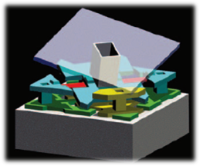 ESS Linac or part of the FAIR Complex. The greatest challenge of the project is to substantially improve the halo monitor using the latest technology of high definition mirror matrix devices, this will provide even higher frame rates and better spatial resolution. Then by combining several such monitors in the same accelerator, direct investigations will be done into halo propagation and are benchmarked with the above code through experiments.
ESS Linac or part of the FAIR Complex. The greatest challenge of the project is to substantially improve the halo monitor using the latest technology of high definition mirror matrix devices, this will provide even higher frame rates and better spatial resolution. Then by combining several such monitors in the same accelerator, direct investigations will be done into halo propagation and are benchmarked with the above code through experiments.
Video:
Development of a simulation suite based on the multilevel fast multipole method
Trainee: Sehar Naveed
Supervisor: Carsten P. Welsch
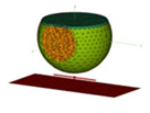 The project aims to optimize the performance of accelerators by applying the latest computational and numerical techniques in the electromagnetic codes for the simulations of the superconducting RF cavities. The Finite Difference Time Domain Method used for the discretization of the 3D space leads to the dense matrix equations constituting millions of unknowns for complex electromagnetic structures. These matrix equations are solved iteratively where the matrix vector multiplications (MVMs) results in the need for large memories and processor speeds that often exceed the performance of even the best computers.
The project aims to optimize the performance of accelerators by applying the latest computational and numerical techniques in the electromagnetic codes for the simulations of the superconducting RF cavities. The Finite Difference Time Domain Method used for the discretization of the 3D space leads to the dense matrix equations constituting millions of unknowns for complex electromagnetic structures. These matrix equations are solved iteratively where the matrix vector multiplications (MVMs) results in the need for large memories and processor speeds that often exceed the performance of even the best computers. 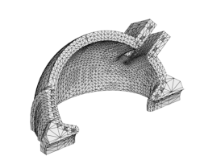 The Multilevel Fast Multipole Method (MFMM) could be cost efficient than the commonly used codes for particle accelerators as it might greatly speed up the computation and reduce the memory requirements by accelerating the matrix vector multiplication. The development of a simulation suite based on the multilevel fast multipole method will be tested against the analytical results. The code will be used to calculate the fields for guiding and accelerating structures in existing and future accelerators, such as the LHC and CLIC, and will be benchmarked against other, more conventional codes.
The Multilevel Fast Multipole Method (MFMM) could be cost efficient than the commonly used codes for particle accelerators as it might greatly speed up the computation and reduce the memory requirements by accelerating the matrix vector multiplication. The development of a simulation suite based on the multilevel fast multipole method will be tested against the analytical results. The code will be used to calculate the fields for guiding and accelerating structures in existing and future accelerators, such as the LHC and CLIC, and will be benchmarked against other, more conventional codes.
Scientist in Charge:
Video:
